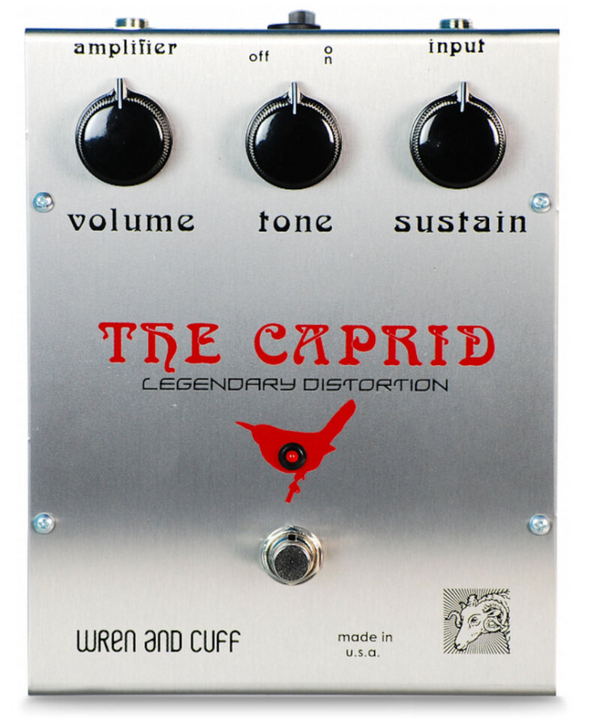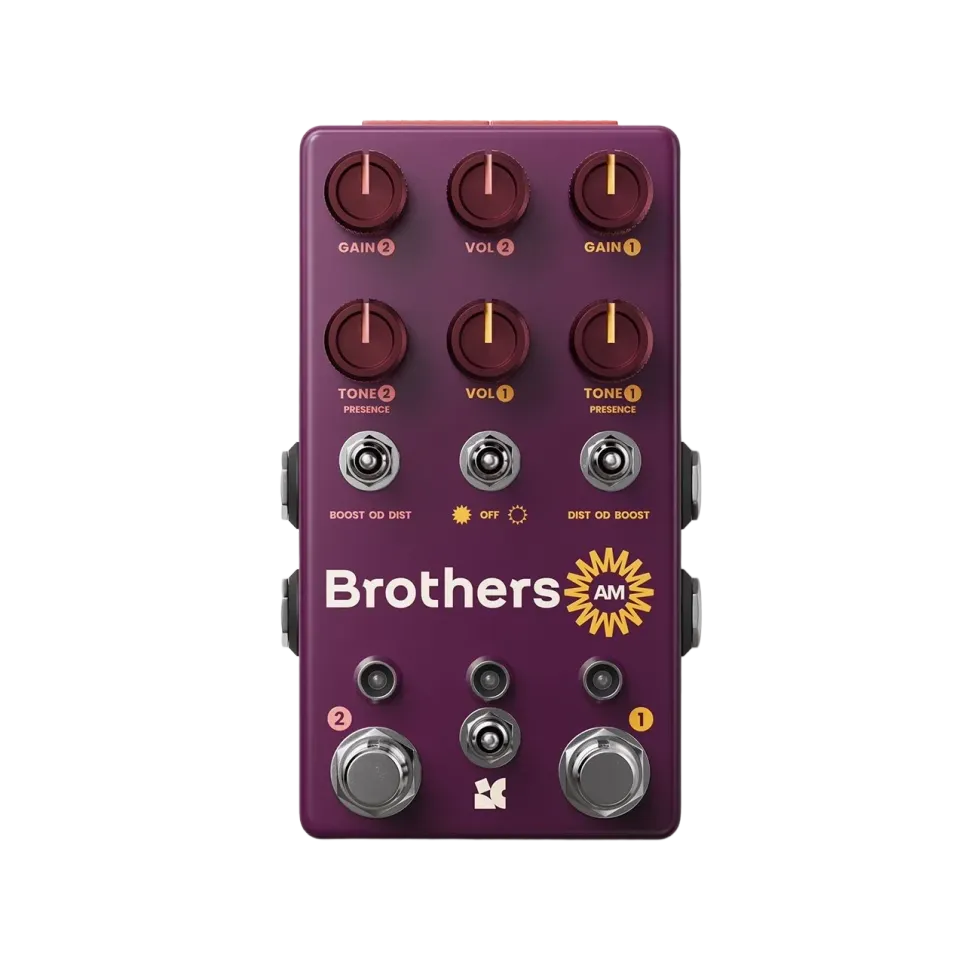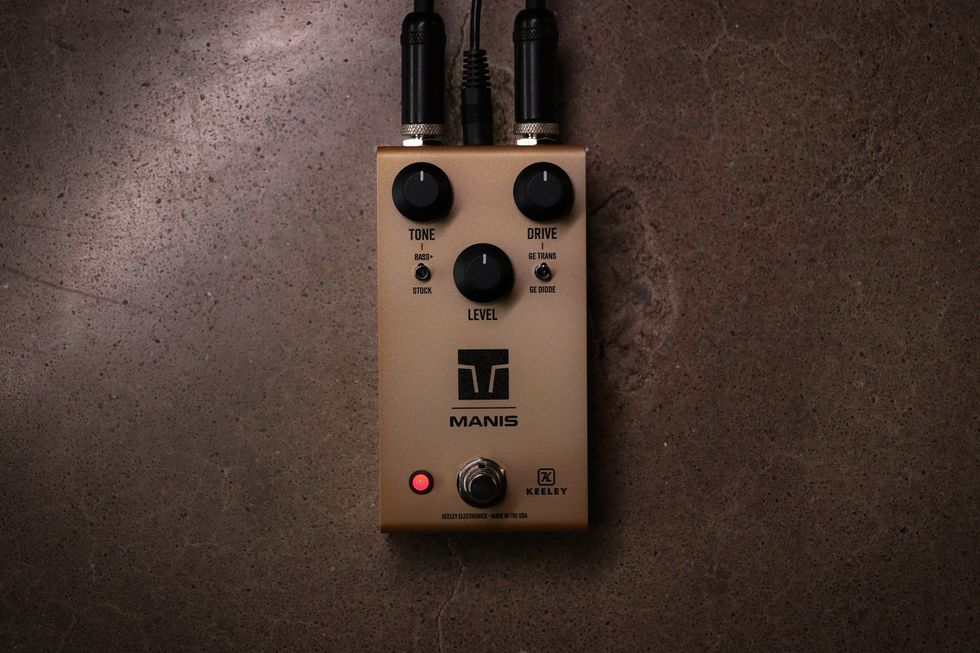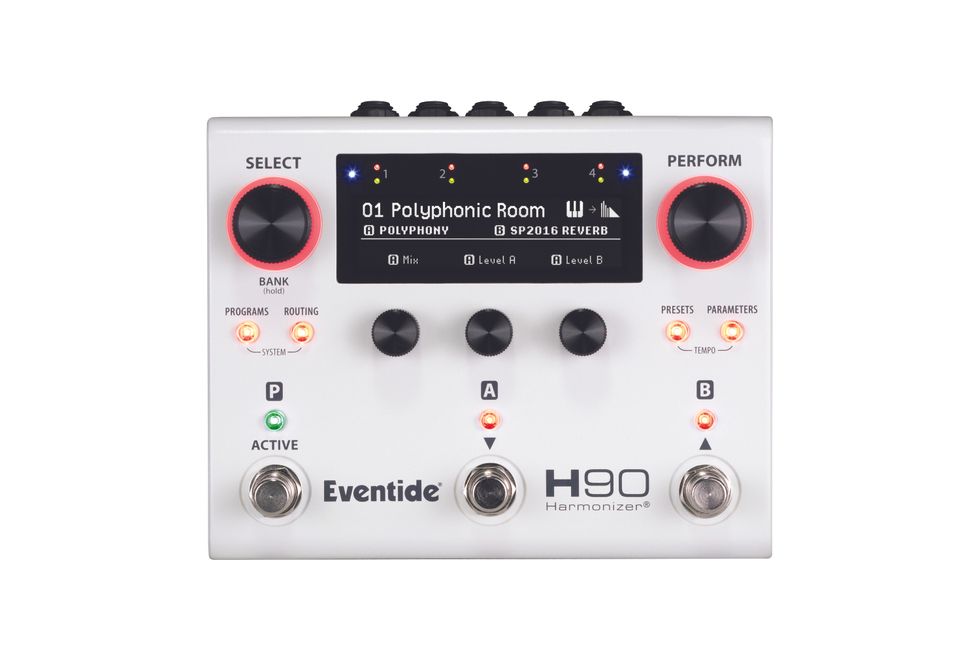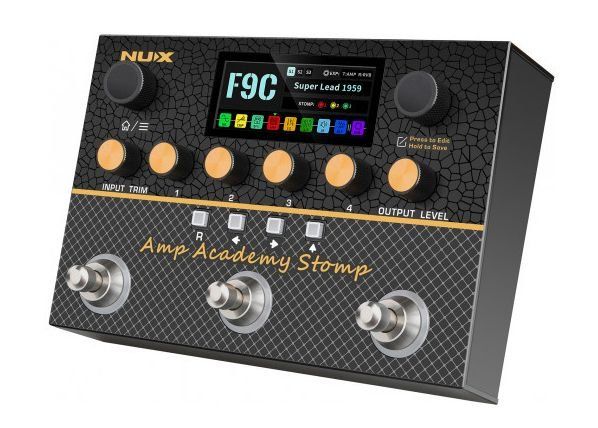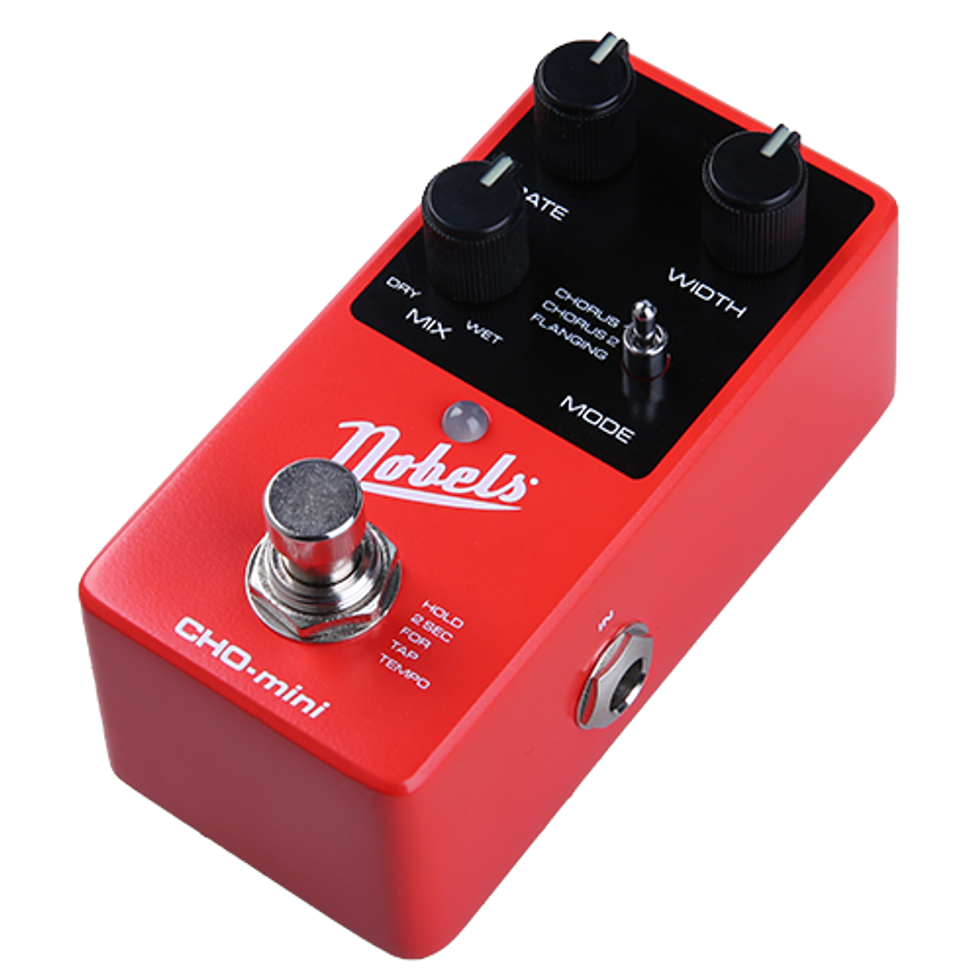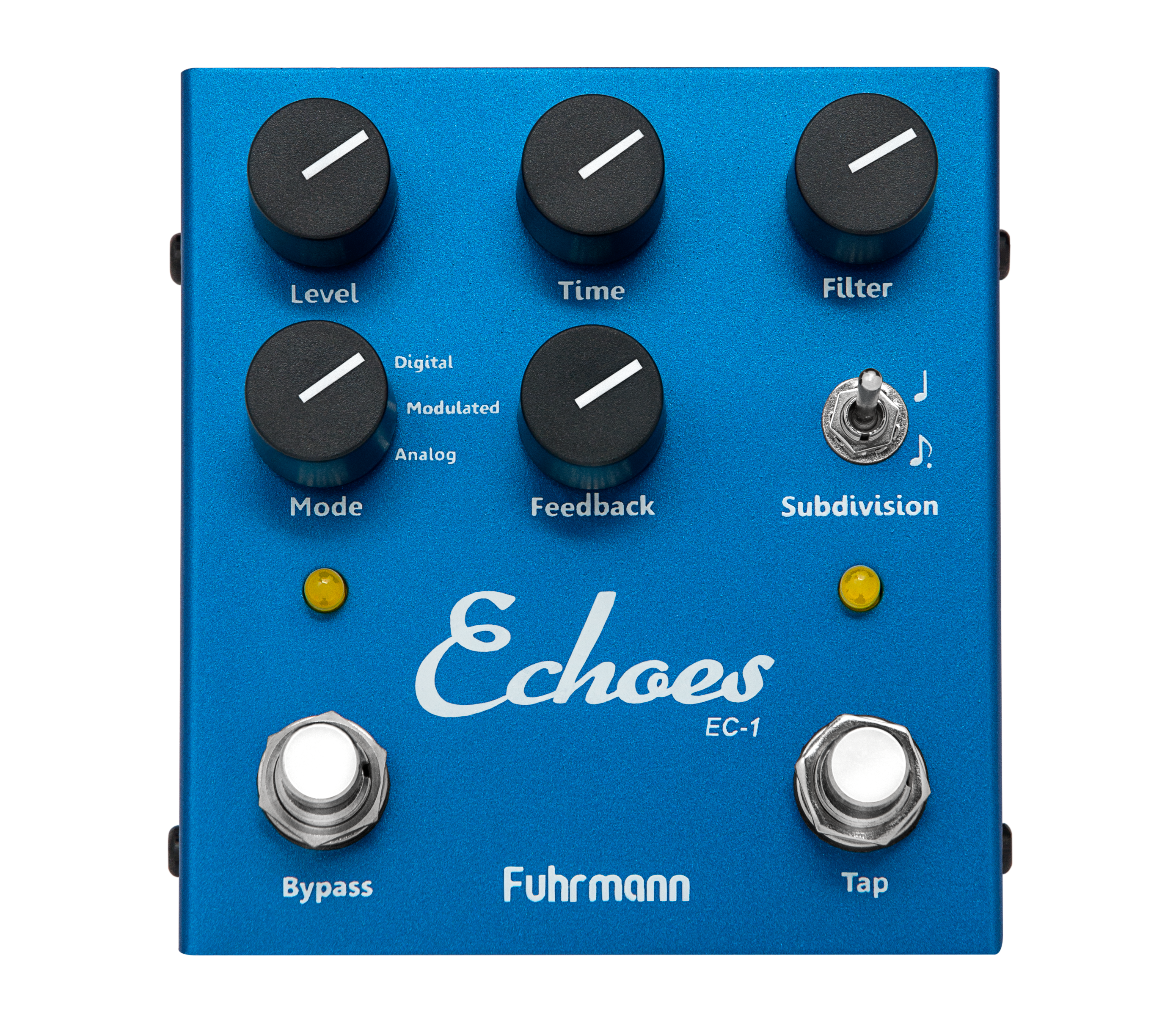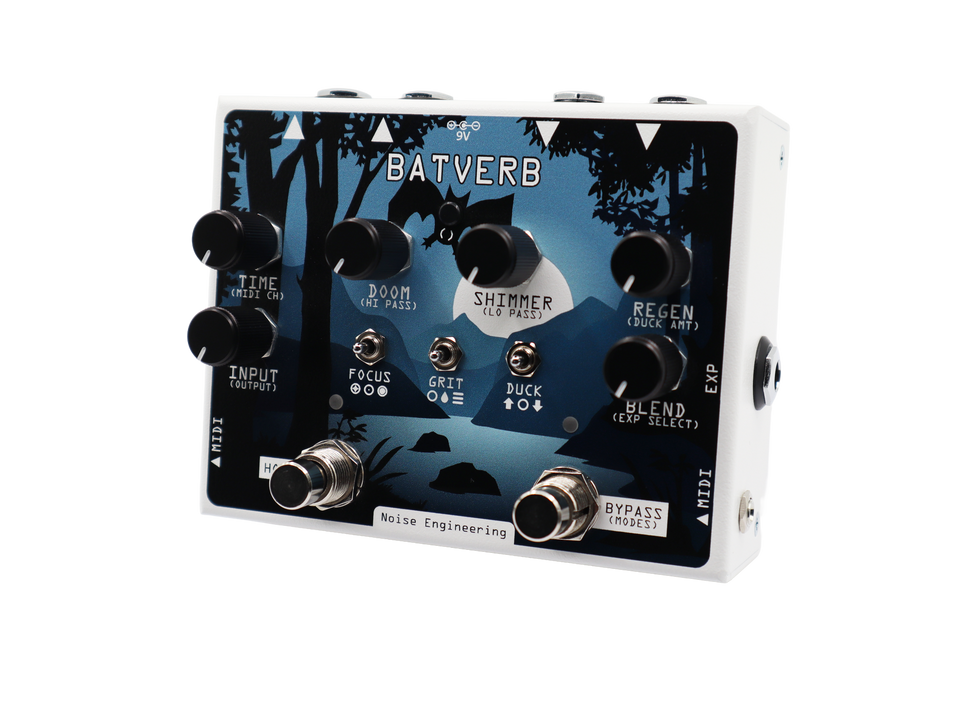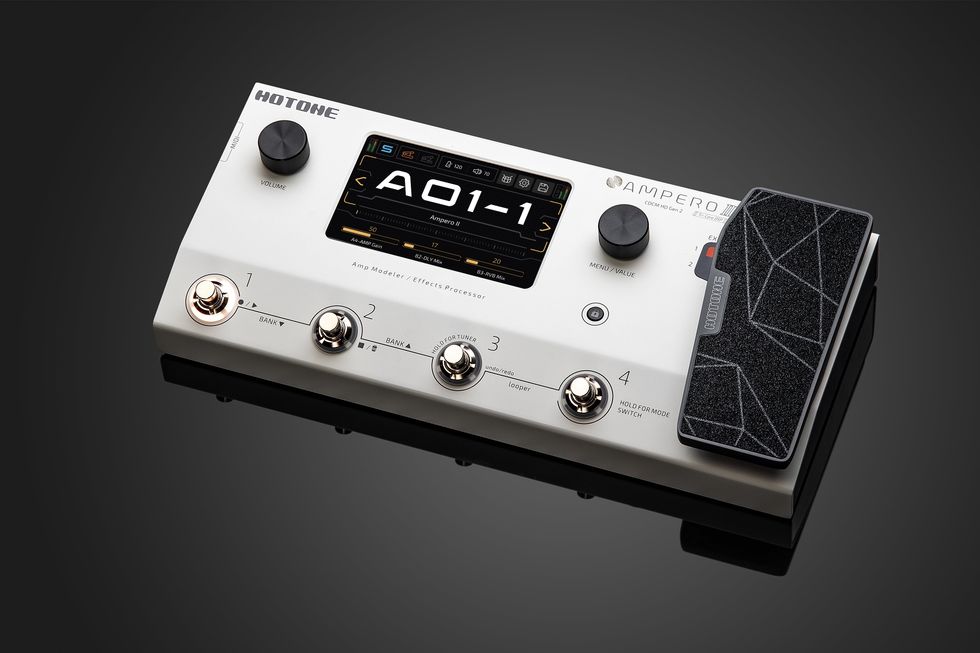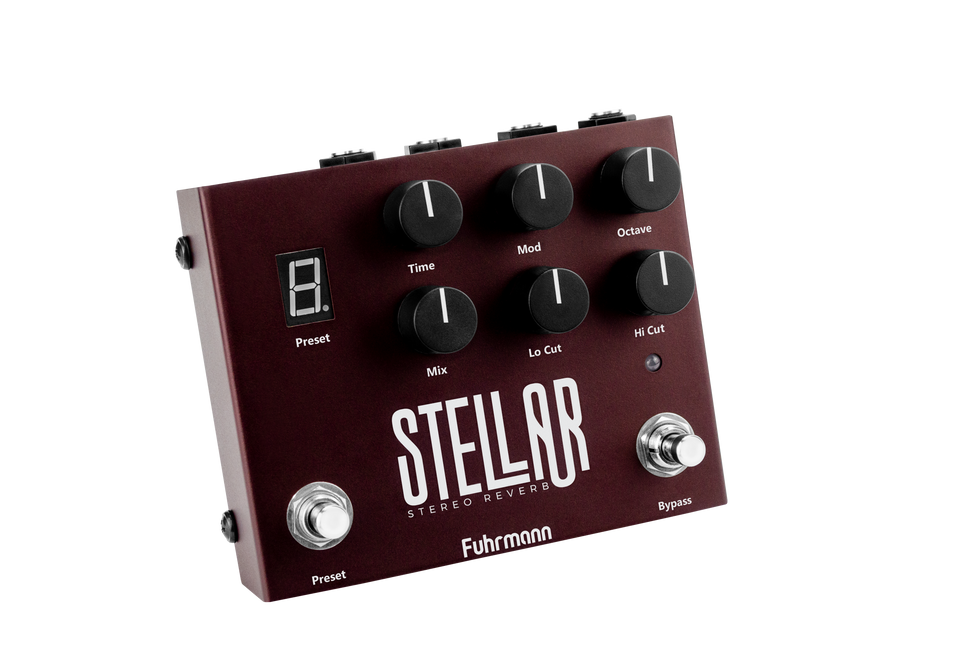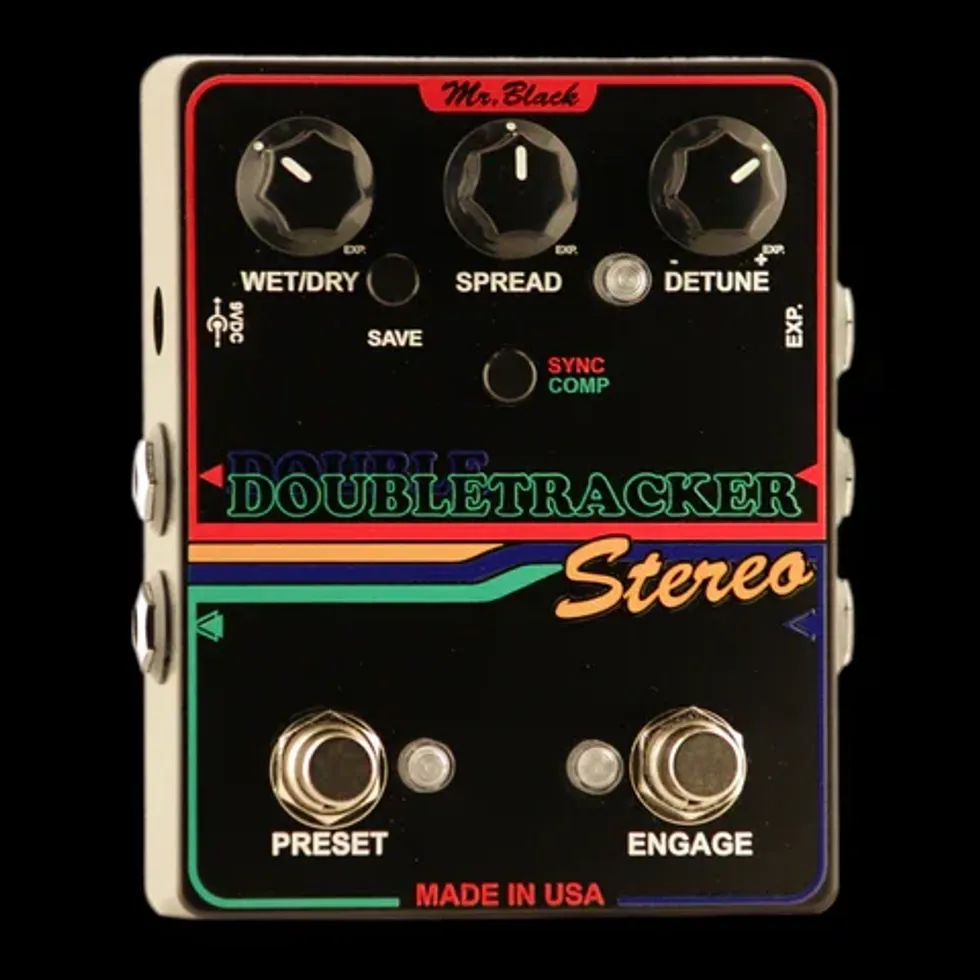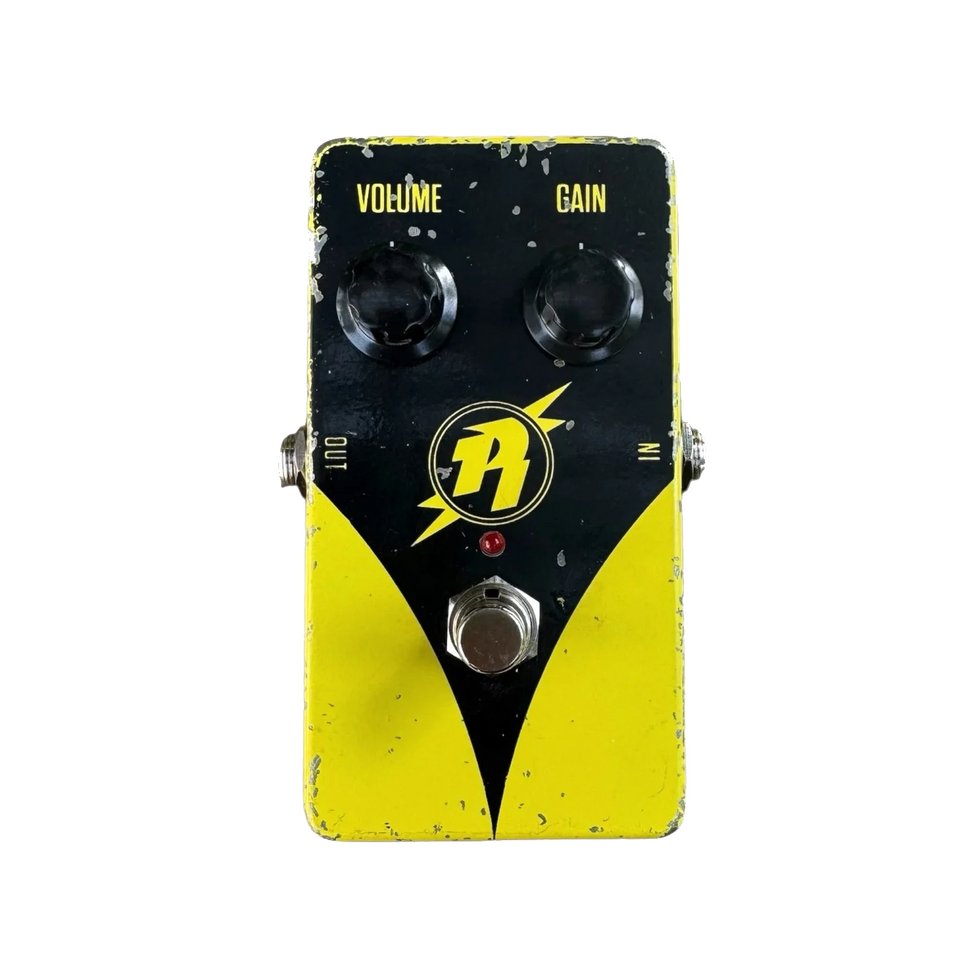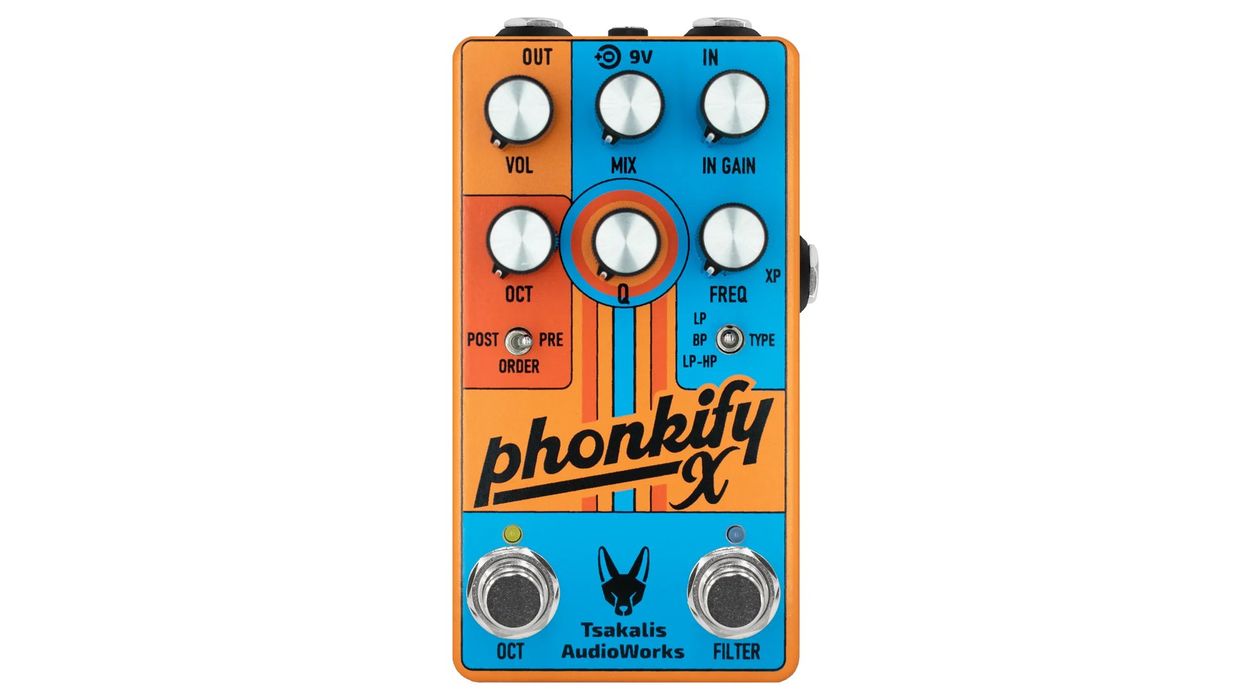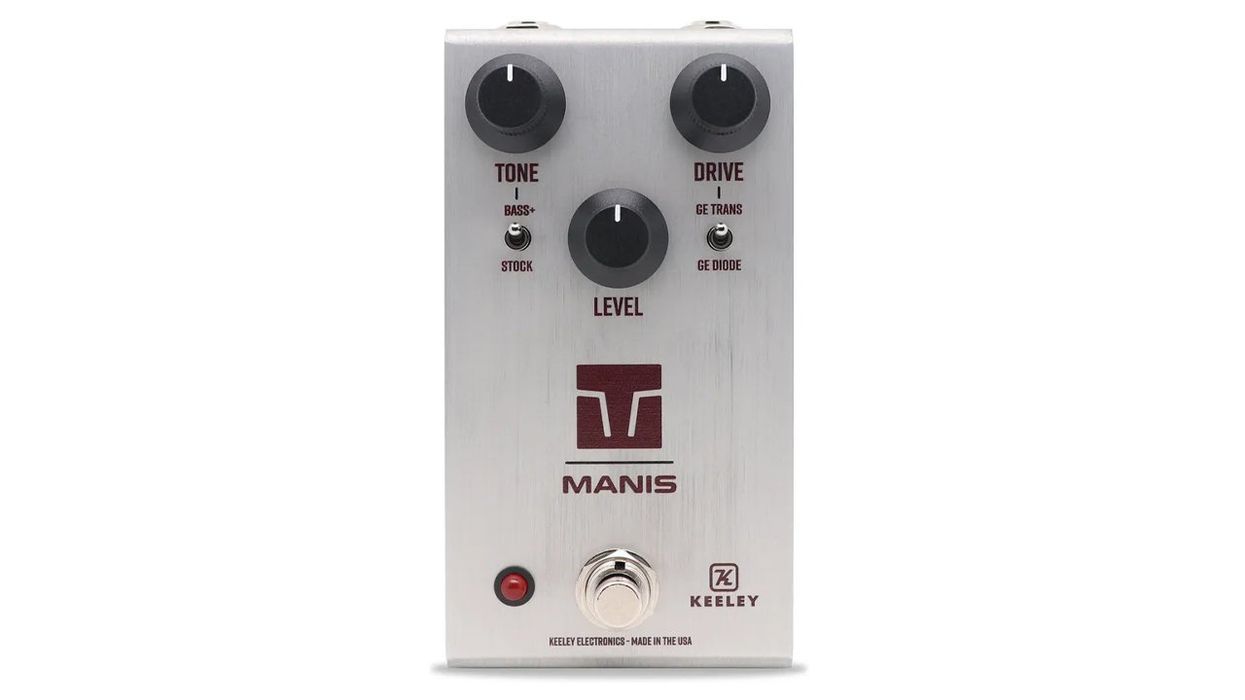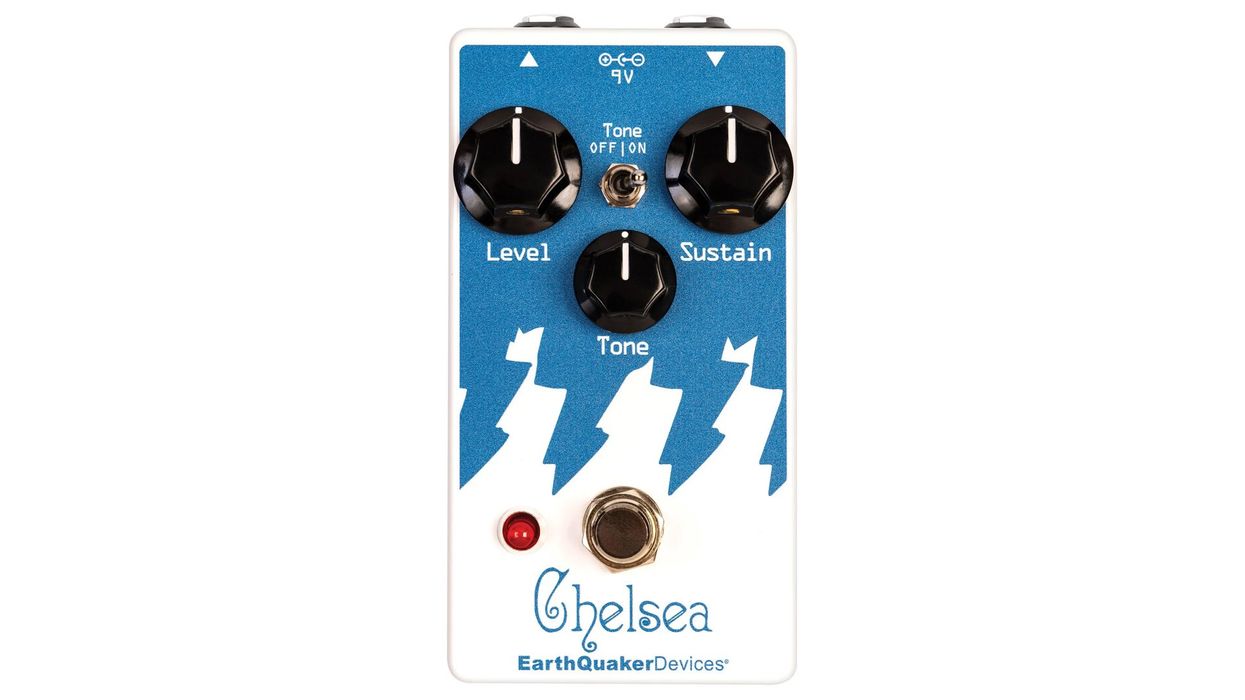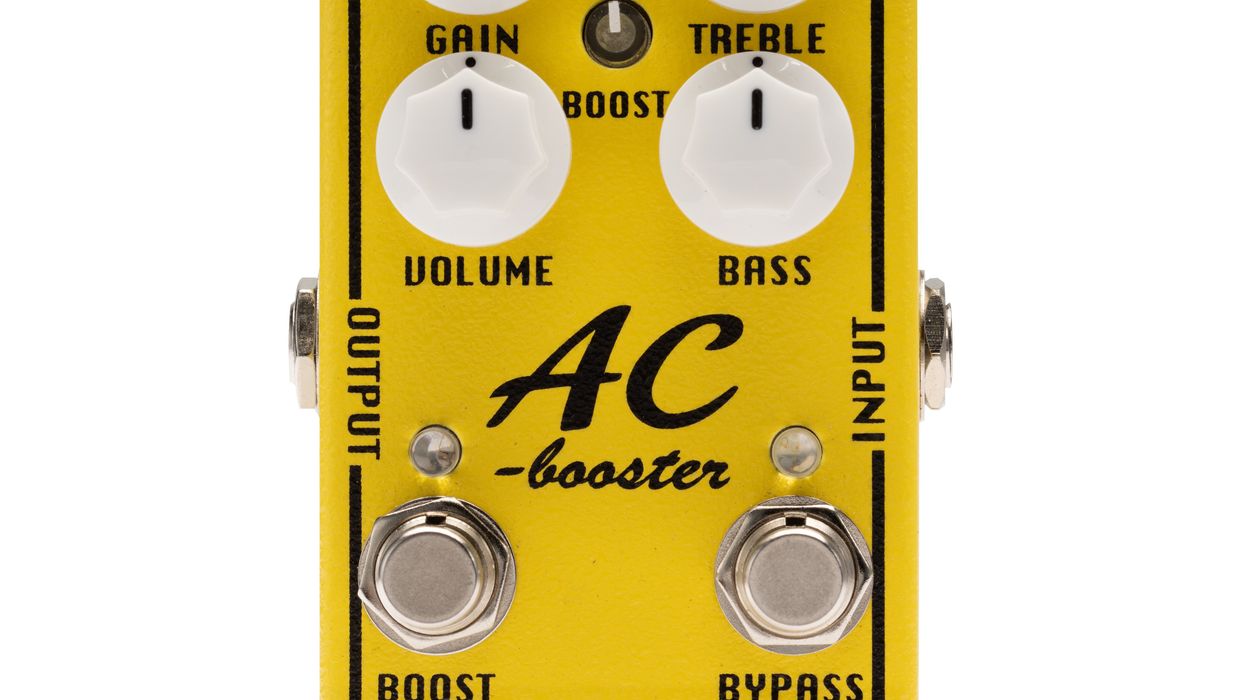The art of stompbox cloning is, at best, an inexact science. A lot of the most classic pedals vary wildly from specimen to specimen—mocking that pillar of empirical science, the control set—and making a definitive version of just about any classic a near impossibility. This certainly holds true for the Big Muff. And it might be doubly true for the mid-'70s Ram's Head version that legions of fuzz fanatics regard as the finest Muff of all.
Yet the manufacturing inconsistencies that make vintage Ram's Head Muffs such a mixed bag has not deterred stompbox builders from attempting to make the ultimate Ram's Head clone. And if there is such an animal, Wren and Cuff 's Caprid is right there in the running for the title.
Running with the Sheep
It's no secret why the Ram's Head Big Muff is as revered as it is. It's the cornerstone of some of David Gilmour's most famous solos, the vehicle for Ernie Isley's soul-fuzz excursions, and the foundation for J Mascis' skull cap-ripping live sound—which is to say they can sound colossal, smooth, aggressive, responsive, squirrely, and just about everything in between.
Wren and Cuff, who have already kicked up waves with their Sovtek-type Muff clones like the Tall Font Russian, demonstrate uncommon reverence to these iconic Muffs of yore in building the Caprid. The enclosure is a dead ringer for an original at a few paces, and it's resplendent in playful and vintage-inspired touches like the little ram head logo in the lower right hand corner and use of the Art Nouveau Böcklin font. It also feels like a sturdy little brick in hand—which inspires all kinds of faith in actually stomping on this stompbox.
The period-correct touches on the exterior only begin to tell the tale of how reverent this design is. The tone control works in reverse, just like the original, which means you (very counter-intuitively) crank the tone with a counterclockwise turn, while you boost the volume and sustain with a more familiar clockwise turn. The on/off switch is a faithful touch that also serves a practical purpose—you can turn the pedal off, leave your cables plugged in, and not drain your 9V battery.
When it comes to period authenticity, however, the pièce de résistance is the printed circuit board, which retraces the 3003 circuit board in the original Electro-Harmonix Ram's Head Muff—right down to the wide copper traces. It's indulgent, it's impractical, it's probably expensive—and if you're a major circuit nerd, it's nothing short of glorious.
One aspect of the Caprid's design where Wren and Cuff was willing to deviate from vintage exactitude is the transistors themselves. After excitedly sourcing a rather pricey stash of 2N5133 transistors, Wren and Cuff owner Matthew Holl determined that the whole batch sounded altogether underwhelming. So rather than bow to to-the-letter authenticity under the hood, Holl adopted a mix-andmatch approach to transistor sourcing—with rather stunning results, as it turns out.
One Heavy Muffin
The differences between Big Muffs and Big Muff clones can be subtle. But the Caprid succeeds in being extraordinarily creamy and smooth by any Big Muff standard. It also has a lot of range for a Muff-type pedal.
If you set up the Caprid for unity gain (which, very authentically is right around 2 o'clock) and set the sustain and tone at about noon, you'll get a sweet, thick, sustaining lead tone that coaxes a very vocal fuzz and grind from a larger amp like a Fender Twin without getting unmanageable, but also sounds gorgeous through a smaller rig like a Fender Deluxe. At these relatively mellow settings you can still use the tone and sustain controls very effectively to dial up more aggression—and with smaller amps in particular, a sweet, buzzing '60s-flavored fuzz that you can transform from singing Page/Beck Yardbirds tones to more radical beehive garage menace.
With the volume at unity, and the tone and sustain at about 2/3 full, the Caprid is great for heavy chording. But it goes way beyond just being useful for I-V power chords, as the pedal retains detail for arpeggios and complex chords at the low end of the fretboard where other Muffs can get mired in muck.
Cranking the volume all the way—a setting preferred by many Ram's Head users— does nothing to blunt the Caprid's capacity for detail. Even when you roll the tone knob all the way off at these heavy levels, the Caprid remains focused and incredibly rich with overtones and color. With volume and tone at these opposite extremes, the sustaining, savage growl of a barred F chord run through a blackface Fender is easily among the most delicious distorted tones I've ever heard. And there aren't many fuzz pedals— of any type—that can swing that trick.
The tone knob, meanwhile, is beautifully reactive and effective. Cranking it wide open and going full throttle on the sustain and volume uncages a fire-spitting monster that's at once deadly, blindingly beautiful, and full of intricacies. You can move from singing and stinging lead tones (that sound particularly smooth with neck pickups and humbuckers) to fast chord arpeggios that retain amazing note-to-note balance. Roll the sustain back a bit and plug in a Stratocaster and you have the combination of tooth and sustain that's typical of Gilmour's Animals tone—perhaps the definitive Ram's Head lead tone.
The Verdict
Unless you're willing to brave the vagaries, risk, and expense of the vintage Muff market, the Caprid is about as complete as a classic Ram's Head experience as you can get. The pedal is built like a battleship and Wren and Cuff nailed the design idiosyncrasies that made old Electro-Harmonix the coolest-looking pedals in the shop.
Whether the Caprid captures the perfect Ram's Head tone is impossible to say, given the unique voice of each original. But the Caprid is a spectacular-sounding fuzz by any criteria. It's capacity for note-to-note detail— even when chording in the most extreme gain settings—is extraordinary. Lead tones are classically Ram's Head—singing, aggressive, and responsive to varied input from a guitar's volume and tone controls—and snarling and savage enough to get out over a raging maelstrom of drums and bass. If there's a drawback, it's that you're not likely to get a Caprid on the cheap. And at 279 bones, less obsessive Muff fans might find the Caprid too much for a relatively simple circuit. But Muff fans that savor the design elegance and civilized-to-savage personality of the best vintage Ram's Heads are bound to be thrilled by what the Caprid can do—and consider this lovingly crafted homage a bargain.
